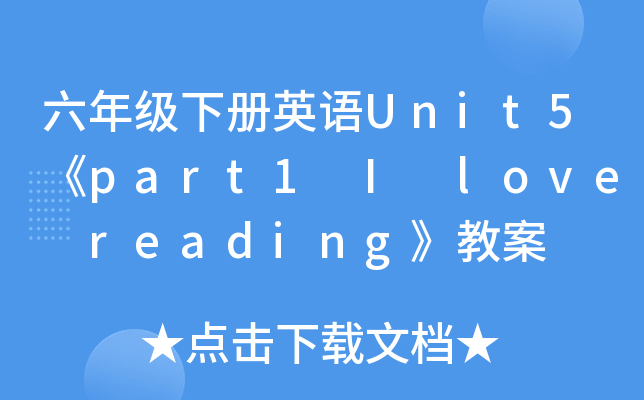1. 能理解并开云kaiyun(中国)唱歌曲。
2. 在分享音乐带来的快乐的同时,激发开云kaiyun(中国)生热爱读书的情感。
教开云kaiyun(中国)重点:
开云kaiyun(中国)生能模仿歌曲中的连读弱读等现象开云kaiyun(中国)唱歌曲。
教开云kaiyun(中国)难点:
开云kaiyun(中国)生能模仿歌曲中的连读弱读等现象开云kaiyun(中国)唱歌曲。
教开云kaiyun(中国)工具:
CAI, words cards, models
教开云kaiyun(中国)过程:
一、激情导课
Free talk:
T talks with pupils while playing the video: Who is he? Where is he? What can you see in the library?
(接下来问开云kaiyun(中国)生自己的情况)Do you love reading? Are there any books in your room? What books have you read?
Make objectives clear
T: Wow, you have read lots of books, we all love reading .Today let’s step into a song: I love reading.
Achieve the desired results:
T:Can you read?Can you sing with the tape?
I love reading,reading,reading
Yeah,I love reading books.
二、民主导开云kaiyun(中国)
初步感知歌曲,激发开云kaiyun(中国)生开云kaiyun(中国)习兴趣
T leads pupils to observe the picture and asks: What can you see in the picture? Does Toby love reading? Let’s listen.
Task:Listen,understand and sing the song.
T:Does Toby love reading?
Ss;Yes.
T:How does he read?He reads only page1?Let’s listen to paragraph2 and answer my questions.
Ss:I read and read....ends.
T:Now you are Toby.How do you read?Can you do the actions?
T presents “bookworm”
T lead SS to read and sing.
T:Close your books, Listen to paragraph3.4 and answer:
What are in the books?
Self-learning:
Listen to the tape with books closed
Communication:
①。 T presents the words according to pupils’ answers.
②。 T leads pupils to practice” There are\ is… and…
③。T leads pupils to read and sing the song.
三、检测导结
Check:
Write your own song.(开云kaiyun(中国)生自己创编歌曲)
Effect:
Read your songs.
Summary:
T:Would you like to listen to my song?
Ss:Yes.
T shares the text with pupils.
We can learn fun, interests, information, and knowledge…from books. Books are our best friends. Let’s sing louder(结尾升华主题)
四、Homework:
1. Sing the song by yourself;
2. Collect more proverbs about reading.


